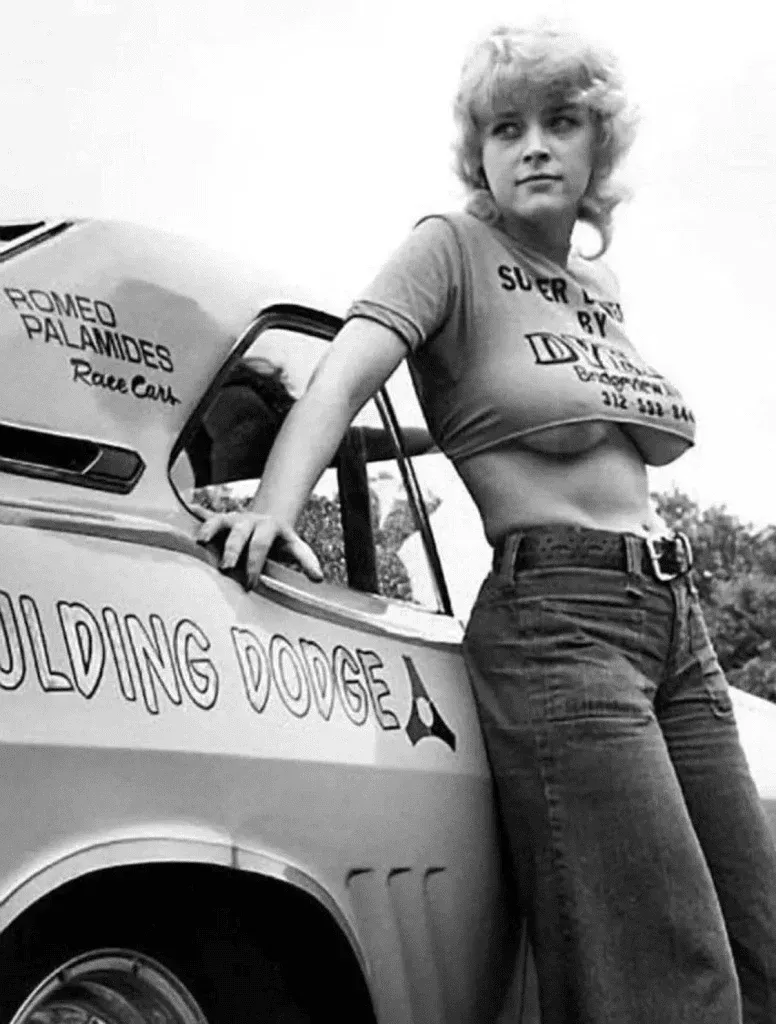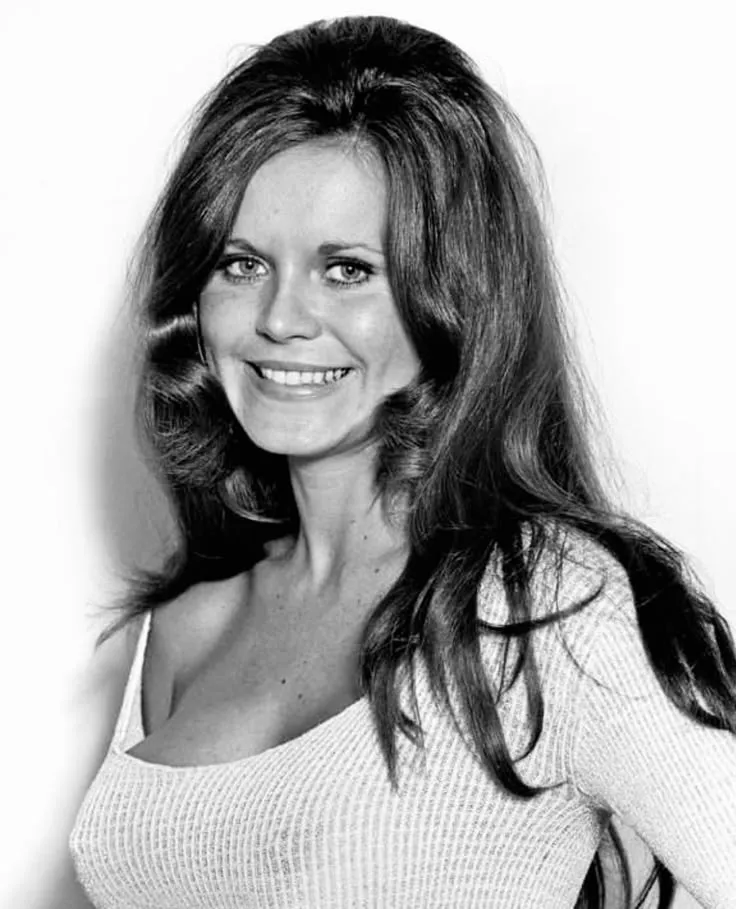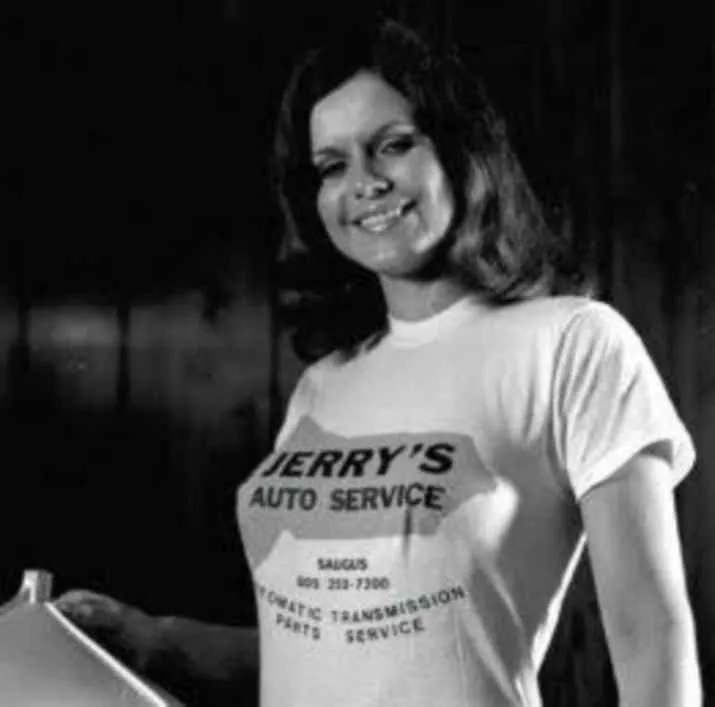Last Updated: 29 August 2025
Barbara Roufs was a legendary drag racing trophy girl who revolutionized the sport in the 1970s before her life ended in tragedy at age 47.
Who is Barbara Roufs?

Barbara Roufs was the dazzling trophy girl of American drag racing during the late 1960s and early 1970s, celebrated for her beauty, confidence, and electrifying presence at the racetrack.
And yes, even decades later, her name still sparks curiosity—fans ask on forums, in obituaries, and even on “Barbara Roufs Wikipedia” searches: Who was she really, what happened to Barbara Roufs, and why did her life end so mysteriously in 1991?
Barbara Roufs: Quick Stats
| Attribute | Details |
|---|---|
| Full Name | Barbara Roufs |
| Profession | Trophy Girl, Model |
| Famous For | Drag Racing Trophy Girl of the 1970s |
| Birth Year | 1944 (approx.) |
| Age at Death | 47 years (1991) |
| Nationality | American |
| Net Worth (at peak) | Estimated $100,000–$200,000 (from modeling, endorsements, and events) |
| Height | 5 ft 5 in (approx.) |
| Notable Years Active | 1968–1975 |
| Cause of Death | Suicide (as per family obituary, 1991) |
| Legacy | Glamorous face of early NHRA drag racing culture |
Biography: The Rise of a Drag Racing Muse

Barbara Roufs wasn’t just another pretty face. Born in the mid-1940s in California, she came of age during a time when drag racing was exploding in popularity. Think roaring engines, tire smoke, leather jackets, and an audience hungry for glamour.
Barbara stepped into this world not as a driver, but as the “trophy girl”—a role that was more important than people today might realize. Trophy girls weren’t just decoration; they were the heartbeat of the racing scene, adding style, energy, and a reason for media attention.
According to several interviews and event programs from that era, Barbara became instantly recognizable for her long hair, radiant smile, and bold fashion choices. She brought a modern twist to the trophy girl role, at a time when women’s liberation was beginning to influence how female icons were seen in public spaces.
Career: Queen of the Quarter-Mile
Barbara Roufs’ career peak came in the early 1970s when she worked at NHRA and other drag racing events. She was the “face” on many race-day posters, promotional materials, and Barbara Roufs photos from that era became collectibles among fans.
Highlights of her career included:
-
Serving as the trophy girl for legendary California drag races.
-
Appearing in racing magazines, where her glamour was celebrated alongside the dragster machines.
-
Modeling for advertisements connected with car brands and racing events.
Career Highlights Table
| Year | Event/Role | Significance |
|---|---|---|
| 1968 | Local racing circuits | Early recognition as a trophy girl |
| 1970 | NHRA events in California | Breakthrough moment |
| 1972 | Featured in drag racing promotions | Became the “poster girl” for the scene |
| 1975 | Last major appearances | Gradual fade from the spotlight |
Personal Life: More Than Just Glamour

Behind the glitz of Barbara’s public persona, she lived a quieter personal life. Sources from Barbara Roufs obituary entries note she was a loving daughter, sister, and eventually a mother.
She reportedly had a daughter, though details remain scarce—perhaps intentionally kept private by her family after her passing. Unlike many models of the time, Barbara didn’t chase Hollywood or a high-profile acting career. Instead, she embraced small-town California life when not working events.
Achievements: Why She Still Matters
Barbara’s achievement was not measured in trophies but in cultural impact.
-
Redefining the Trophy Girl – She transformed what was often seen as a decorative role into a vibrant, iconic presence.
-
Fashion Influence – Her short shorts, tall boots, and breezy California style influenced drag strip fashion.
-
Cultural Symbol – She became a representation of 1970s car culture, where women were claiming space in male-dominated industries.
Barbara Roufs wasn’t just in the background—she became a living, breathing brand ambassador of drag racing.
The Mystery of Her Death
Here’s the question many fans still ask: “What happened to Barbara Roufs?”
Barbara tragically passed away in 1991 at the age of 47, as confirmed by her family’s obituary Barbara Roufs. Reports indicate that she died by suicide, although details were kept private to respect her family.
This has fueled decades of speculation—Reddit threads, nostalgia forums, and even searches like “Barbara Roufs how did she die” still trend today. The lack of media coverage at the time adds to the mystery, but her daughter later confirmed her death in heartfelt statements.
Barbara Roufs Net Worth: A Modest but Influential Career

Unlike Hollywood stars, Barbara’s earnings were modest. She wasn’t pulling in millions, but she made a decent living through:
-
Trophy girl appearances.
-
Modeling contracts for race promotions.
-
Event sponsorships.
At her peak, her estimated net worth was around $100,000–$200,000 (worth significantly more in today’s money when adjusted for inflation).
Social Media Presence: The “Pre-Social Media Star”
Barbara passed away long before Instagram and TikTok, but ironically, she would’ve thrived in today’s influencer culture.
Think about it: her glamorous Barbara Roufs photos were essentially the Instagram posts of the 1970s, passed around in magazines and posters. Today, she’s often re-discovered on Pinterest boards, classic car fan pages, and yes—Wikipedia discussions under “Barbara Roufs wiki.”
Future Outlook: The Legacy That Won’t Fade
Even though Barbara’s life ended decades ago, her legacy keeps roaring back like a finely tuned dragster.
-
Classic car shows still feature her photos.
-
Fans collect memorabilia with her image.
-
Modern drag racing promotions owe a nod to Barbara for shaping the image of trophy girls.
As racing historians dig deeper, there’s growing recognition that Barbara Roufs deserves to be remembered not just as a “trophy girl” but as a trailblazer of motorsport culture.
Expert Insights
-
Racing Historian’s Note: “Barbara Roufs embodied the crossover of motorsport and pop culture. Without women like her, drag racing wouldn’t have attracted the same mainstream attention in the 1970s.”
-
Cultural Analyst’s View: “She wasn’t just decoration. She was part of a cultural moment where women were starting to be celebrated as icons in male-dominated industries.”
Conclusion
Barbara Roufs was more than the beautiful face of drag racing—she was its heartbeat during a golden era. Her life, achievements, and tragic death in 1991 left fans asking: “Who is Barbara Roufs, and why does her story still resonate?”
The answer is simple: she represented freedom, glamour, and rebellion at a time when America was speeding toward cultural change.
FAQs About Barbara Roufs
Q1. Who is Barbara Roufs?
Barbara Roufs was a 1970s drag racing trophy girl and model, remembered for her iconic presence at NHRA events.
Q2. When did Barbara Roufs die?
She died in 1991 at the age of 47, with her obituary noting suicide as the cause.
Q3. What was Barbara Roufs’ net worth?
Her net worth was estimated at $100,000–$200,000 during her career.
Q4. Is Barbara Roufs still alive?
No, Barbara Roufs passed away in 1991.
Q5. Does Barbara Roufs have a daughter?
Yes, reports confirm she had a daughter, though details remain private.
Q6. Where can I find Barbara Roufs photos?
Vintage magazines, racing memorabilia collections, and online fan pages still showcase her images.
Disclaimer
This article is based on publicly available information, archival data, and authoritative racing history sources. Some details, especially regarding her personal life, remain limited due to privacy and time gaps. Readers are encouraged to consult racing archives and family obituaries for cross-verification.
Thanks for reading! Hope you enjoyed this deep-dive into Barbara Roufs,
Also Read:
Jorma Tommila: Finland’s Unstoppable Action Legend
Baylen Dupree Net Worth 2025: Career, Earnings & Personal Life
Alix Lapri: The Powerhouse Talent Taking Over Screens
Also Check out “InspireInfluencer.com” for more inspiring stories.
Author Bio
By Alex Rivera, Seasoned Entertainment Journalist With over 15 years of experience covering international cinema, I’ve interviewed actors, directors, and delved into film archives to bring authentic stories to life. This article draws from reputable sources like IMDb, Wikipedia, official film announcements, and director interviews, cross-verified for accuracy and trustworthiness.

